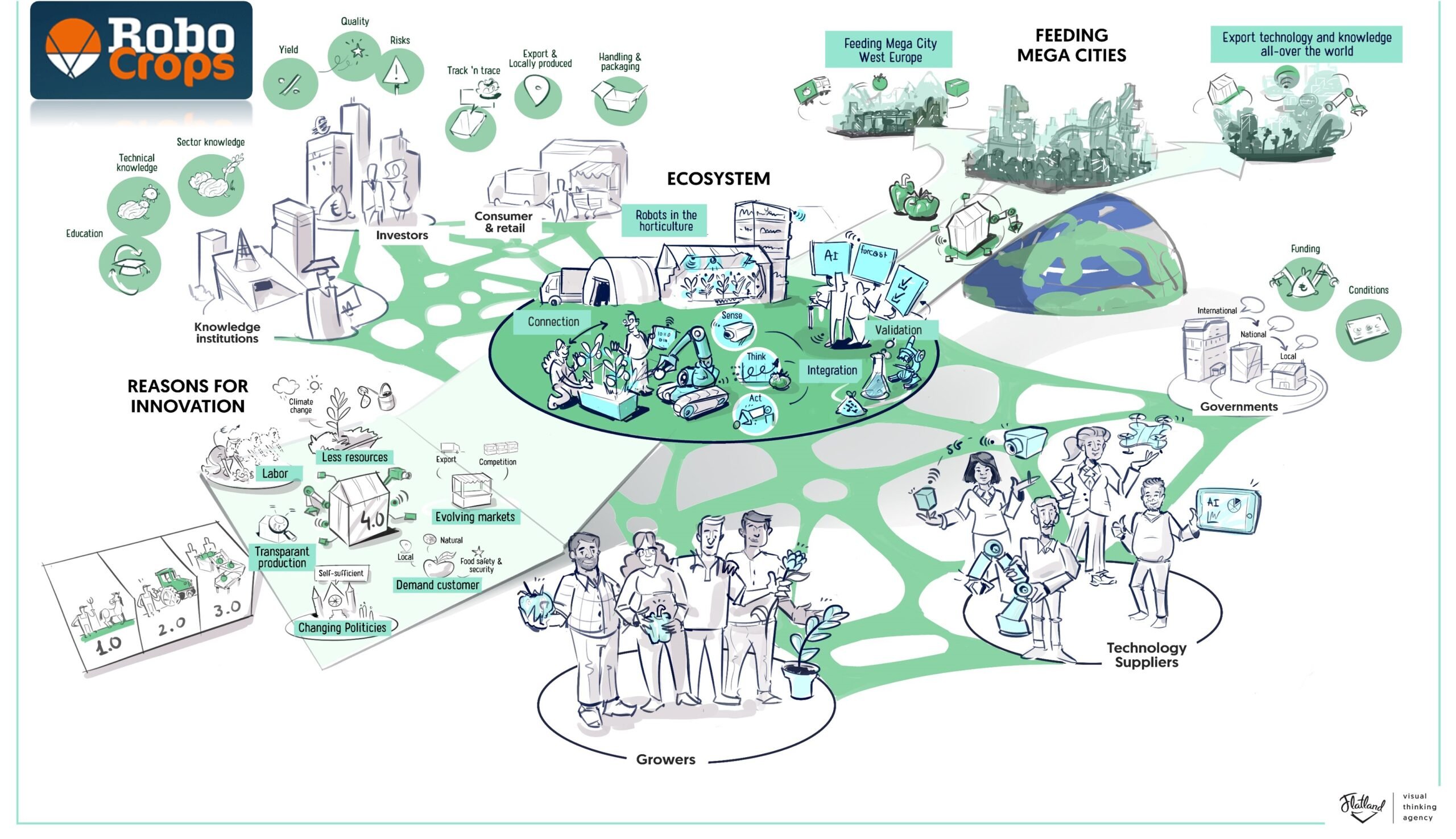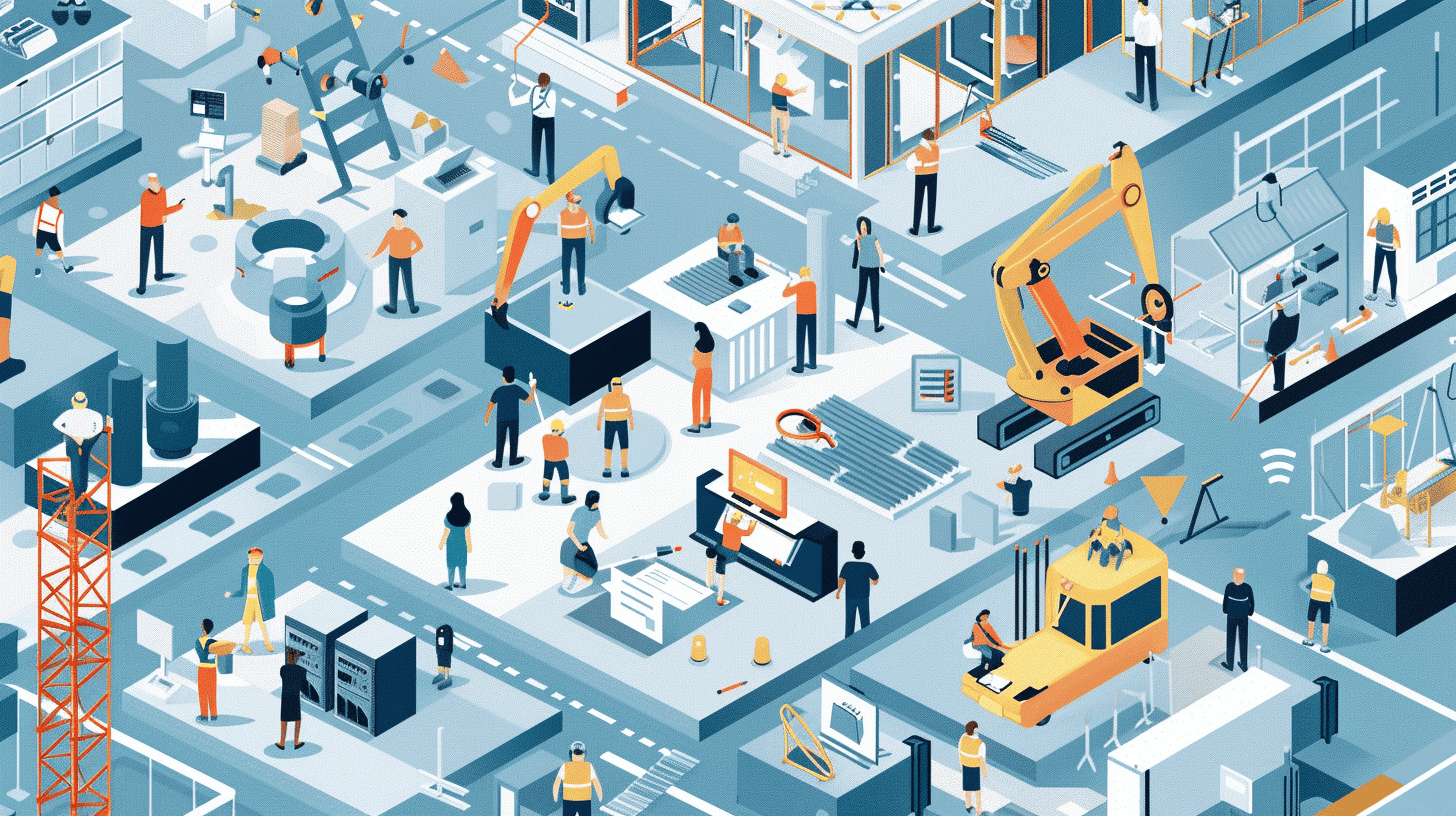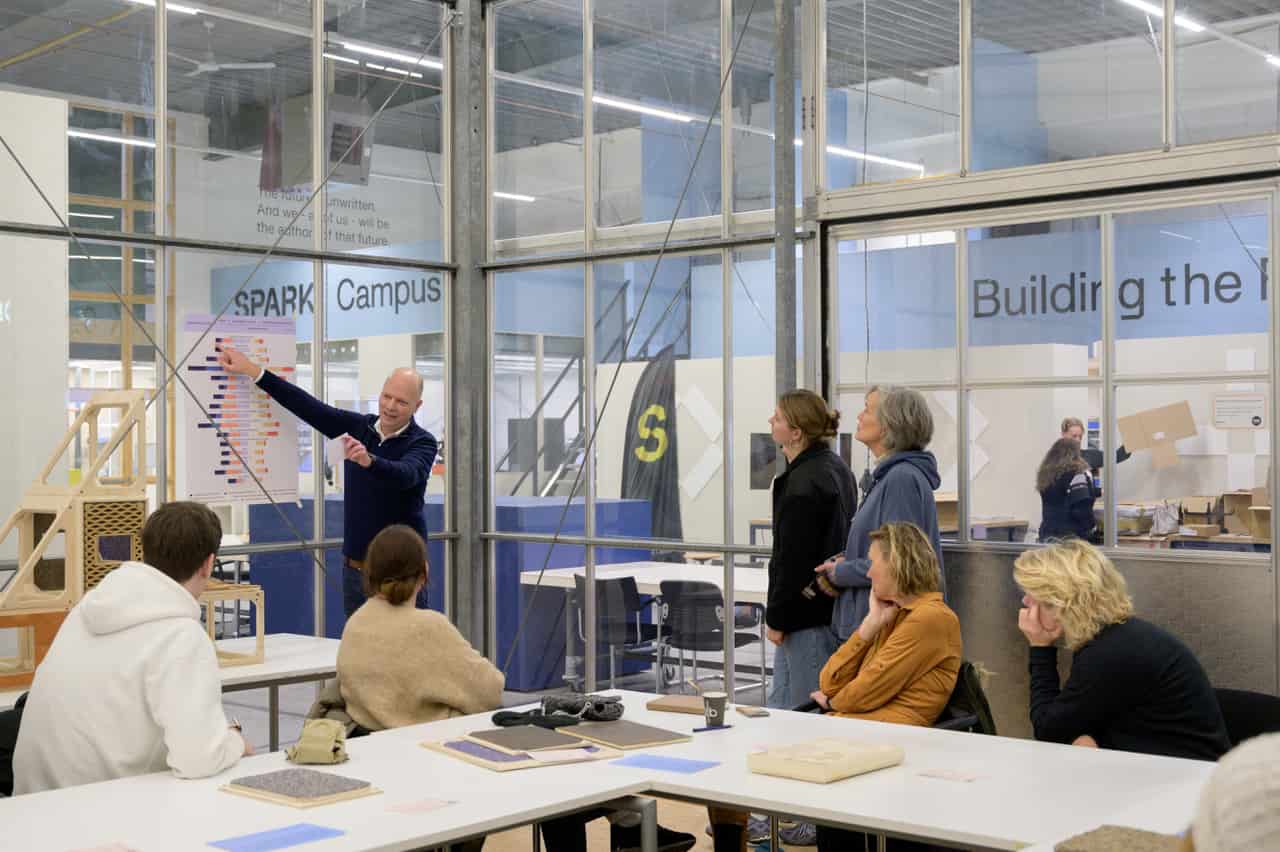
Ecosystems. It seems like everyone in the land of innovation is busy with them at the moment. They also form an important model within Innovation Quarter to manage and control our efforts.
When we refer to innovation ecosystems, there are quite a few different definitions. Some of these definitions can be found in “Innovation ecosystems: A conceptual review and a new definition” An older definition that highlights some relevant parts for me is this one:
“An innovation ecosystem refers to a loosely interconnected network of companies and other entities that coevolve capabilities around a shared set of technologies, knowledge, or skills, and work cooperatively and competitively to develop new products and services (Moore, 1993).”
In nature, an ecosystem is a natural system made up of organisms, their environment and the interactions between them, within defined boundaries. The concept of an ecosystem was introduced in 1935 by the English botanist Arthur Tansley and further developed by the American ecologist Eugene Odum
A natural ecosystem is, among other things, all about cooperation, competition and symbiosis. These are also important matters in ecosystems surrounding innovation.
Just as there are different definitions for an ecosystem, different characteristics are also assigned. Some of the characteristics of a natural ecosystem are:
- Made up of organisms and their environment
- Can be viewed at different levels, world, forest, tree
- Networks of relationships between organisms
- Relationships with other ecosystems, an ecosystem is not a closed system
- Circulation of energy and matter, waste of one organism is food for another
How can we translate characteristics from the definition of a ‘natural’ ecosystem to an innovation ecosystem and what can we learn from it? Well, let’s go through them.
We will use the robotic greenhouse ecosystem, RoboCrops, as an example.
Organisms and their environment
In innovation ecosystems, it is all about the actors within the ecosystem. These can be large and small companies, knowledge institutions, governments and consumers who will ultimately use the product or service that has been developed. In the case of harvest robots, the demand arose because of the lack of personnel to carry out the work in the greenhouse.
It is increasingly difficult to find enough skilled personnel to work in horticulture. Covid has also ensured that more attention is paid to the importance of producing food in the vicinity of the buyers. We have been doing this in the Netherlands for many years now, but in many places in the world there was a shortage of some food products because they could not be flown in.
Depending on the level at which it is viewed, it may be an innovation ecosystem within a single business unit in a company, multiple companies or a larger entity of, for example, all parties working on the energy transition in South Holland.
Of course, the courses of action you take in an innovation ecosystem depend heavily on the level at which they are viewed. The broader the view, the wider the variety of relationships to take into account. In the case of RoboCrops, for example, we are talking about the ecosystem around the application of robotics and Artificial Intelligence (AI) for greenhouse horticulture.
Networking relationships
No matter what level is being looked at, an innovation system is always about the relationship between the different actors. A classic in innovation is the relationship between the sales department and R&D when dealing with an “internal” ecosystem. But also, a technology company develops robots for application in greenhouse horticulture, what is the relationship with the employees who have to operate them? Are they adequately trained?
For the sake of simplicity, we view an (innovation) ecosystem as a closed system with clear boundaries. These boundaries to the ecosystem are ‘artificially’ defined. The restrictions help keep the system workable and manageable. An ecosystem around robots for greenhouse horticulture can just as easily be expanded to robots across the entire agricultural sector. There are quite a few similarities between harvesting robots for tomatoes and those for apples.
What is important to realize here is that, just like in nature, an ecosystem is not closed. If you look at an individual leaf on a tree, then you are also dealing with the entire tree and even the forest where the tree is standing. In order to keep an innovative ecosystem manageable and recognizable, it is placed within certain limits. These boundaries are always artificial and relationships with the environment of the system remain extremely important. This is why it is important to always stay connected to influences from beyond your chosen ecosystem.
Circulation of energy and matter
In a natural ecosystem, energy and matter circulate. Waste from one organism is food for another. Recycling occurs, substances and energy are not easily depleted, for example, think about the nitrogen cycle, carbon cycle and water cycle. What does that look like in an innovation ecosystem?
This is where we come to the important themes of cooperation, competition and symbiosis. In nature, for instance, there is a cooperation between white clover and Rhizobium bacteria. The bacteria extract nitrogen from the air which can then be used by clover to grow. The bacteria themselves do not benefit from the nitrogen they absorb but the clover can use it to form nitrogen nodules which are then used as energy by the bacteria.
A similar kind of “symbiosis” can occur in a greenhouse ecosystem. Let’s say a robot collects data for a harvest prediction for cucumbers. In addition to the images of the cucumber that are taken daily by a robot in the greenhouse, the robot could also observe other things. E.g., a leaking drip hose or a lamp that is no longer lit.
This last data is not relevant for the prognosis of the harvest but could be used by others to make, for example, an app to alert the technical services in the company. The robot is already riding around the greenhouse anyway so this extra data is collected virtually ‘for free’. However, in order to use it, parties must work together and see what the potential value is. In addition to symbiosis and cooperation, there may also be competition as the developer of the robot might want to develop a maintenance app of their own.
Innovating together
A common challenge is that opportunities and revenue models are not always in the place where costs are incurred. Why should I incur costs if it’s not me but someone else who can make money from it?
In an (innovation) ecosystem it is important to look at the opportunities that the system as a whole can offer. Returning to the RoboCrops ecosystem, a grower will not stand to gain if a harvesting robot is for sale but they do not have the staff who can operate it. Or if new AI technology is made available that creates new opportunities for horticulture but the tech companies are not familiar with the sector?
This is precisely why it is important to work collectively on an ecosystem. The system can only survive or improve if there is cooperation, symbiosis and yes, also competition!
Also in the field of innovation, we can learn a lot from nature and the ecosystem that is our world. But then again, we already knew that for quite some time, didn’t we?
About this column:
In a weekly column, written alternately by Eveline van Zeeland, Eugène Franken, Katleen Gabriels, Carina Weijma, Bernd Maier-Leppla, Willemijn Brouwer, PG Kroeger and Colinda de Beer, Innovation Origins tries to figure out what the future will look like. These columnists, occasionally joined by guest bloggers, are all working in their own way on solutions to the problems of our time. So that tomorrow is good. Here are all the previous installments of this series.







